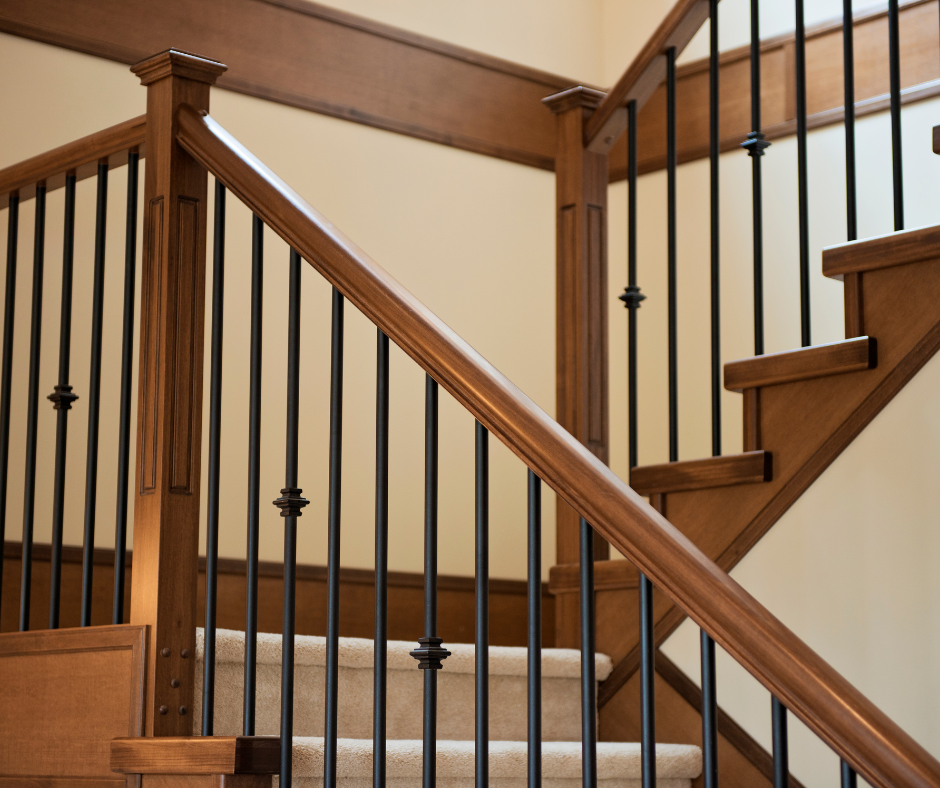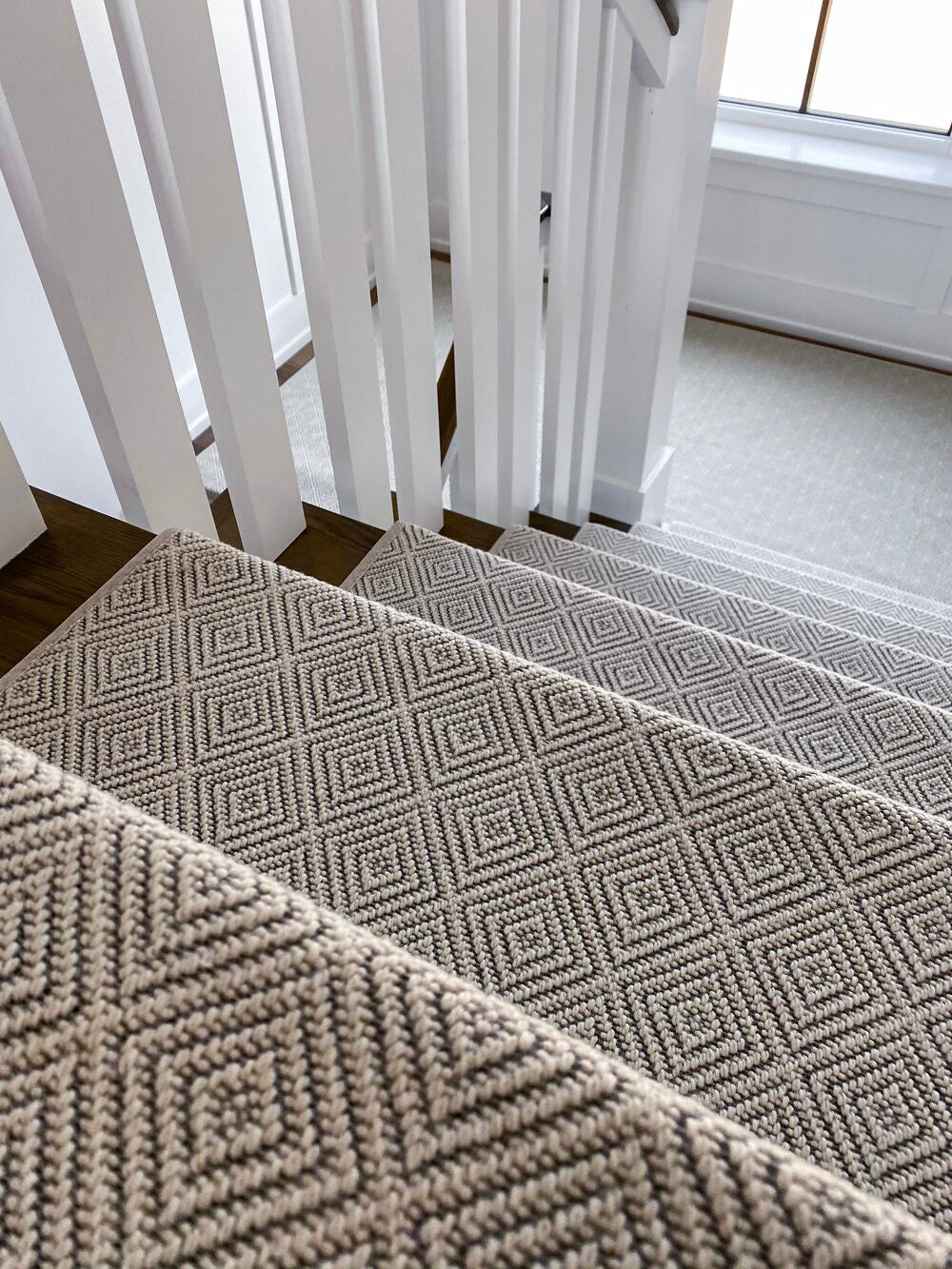Stair safety is something most homeowners don’t think about—until it becomes a problem.
The cost to install rubber stair treads typically ranges from $100 to $400, depending on material quality, labor, and stair design.
This guide breaks down everything you need to know to estimate your total cost with confidence.
You'll learn how factors like tread style, prep work, and installation methods impact pricing.
We’ll also compare options like carpet stair treads so you can choose the best fit for your home.
Whether you’re hiring a pro or doing it yourself, you’ll walk away with a clear plan and realistic budget.
What’s the Average Cost to Install Rubber Stair Treads?
On average, rubber stair treads cost between $5 and $25 each, depending on quality, thickness, and design.
Installation labor, if you choose to hire someone, can range from $5 to $15 per stair.
For a staircase with 12 steps, that means you're likely looking at a total of about $180, which includes both materials and labor.
This makes rubber stair treads one of the most affordable options compared to alternatives like hardwood treads or metal stair nosing.
It’s also worth noting that this is a one-time cost.
Rubber treads are built to last for years with minimal upkeep.
Benefits of Rubber Stair Treads
Rubber stair treads provide multiple benefits, especially when it comes to high-traffic areas or households with safety concerns.
First, rubber offers excellent grip.
This helps reduce the risk of slips and falls—a major concern if you have young children, pets, or elderly family members.
Second, rubber is impact-resistant and durable.
It won’t dent, chip, or splinter like wood, and it won’t rust or corrode like metal.
Third, rubber is easy to maintain.
Cleaning typically involves just a damp cloth and mild soap, making it one of the lowest-maintenance stair solutions available.
Finally, rubber stair treads are available in a range of textures and patterns, making it easier to find a look that fits your space while still focusing on function.
Factors That Affect the Cost to Install Rubber Stair Treads
Several variables can influence your total cost, including:
1. Quality of Materials
Not all rubber is created equal.
Some stair treads are made with recycled rubber, while others are manufactured from heavy-duty virgin rubber designed for commercial use.
Higher-end options may cost more upfront but offer better performance over time.
2. Stair Design and Layout
Straight, uniform stairs are easier and faster to work with.
If your staircase has landings, curves, or varying widths, installation might require custom fitting or trimming, which adds to the labor time and cost.
3. Geographic Location
Labor rates vary depending on your area.
If you’re located in a city with a high cost of living, expect to pay on the higher end of the labor range.
4. Surface Preparation
Before installation, your stairs need to be clean and level.
If you need to remove old treads or fix uneven steps, that prep work may increase the final bill.
5. DIY vs. Professional Installation
The biggest factor influencing your final cost is whether you install the treads yourself or hire a pro.
Let’s look at both options more closely.
Material Cost Breakdown Example
Say your rubber stair treads cost $5 each and you have 12 steps to cover.
That brings your total material cost to:
12 treads × $5 = $60
If you choose treads on the higher end of the spectrum, say $20 each, your material total becomes:
12 treads × $20 = $240
That’s a significant difference, but higher-end treads often include additional features like UV resistance or enhanced traction surfaces.
Labor Cost Breakdown Example
Let’s assume you hire a pro who charges $10 per stair for installation.
That means your labor cost for 12 stairs is:
12 stairs × $10 = $120
If your stairs are standard and installation is simple, that might be all you pay.
However, if the stairs require extra prep, you may pay more.
Total Project Estimate
Combining both material and labor costs, you’re likely to spend between $100 and $400 for a full 12-stair installation, depending on the quality of the treads and who does the work.
How to Install Rubber Stair Treads Yourself
If you're looking to save money on labor, learning how to install rubber stair treads yourself is a great option.
The process is simple, especially for straight staircases.
You don’t need specialized tools—just patience and attention to detail.
Here’s a step-by-step guide:
Step 1: Clean the Stair Surface
Use a vacuum and mild cleaner to remove dirt, dust, or oils.
Rubber treads stick best to clean, dry surfaces.
Step 2: Measure and Dry Fit Each Tread
Before applying adhesive, place each tread on the step to check fit and alignment.
Trim edges if needed.
Step 3: Apply Adhesive
Use a recommended adhesive, which might be in the form of double-sided tape or a peel-and-stick backing.
Some treads require adhesive spread with a notched trowel.
Follow the manufacturer's instructions closely.
Step 4: Press Firmly Into Place
Attach the rubber stair tread by pressing it firmly onto the step.
Start from one edge and work your way across to avoid air pockets.
This is a key point when understanding how to attach rubber stair treads for a tight, secure fit.
Step 5: Let It Set
Give the adhesive time to cure.
Avoid walking on the stairs for several hours or overnight, depending on the adhesive used.
Tips for a Successful DIY Install
-
Start from the bottom and work your way up the stairs.
-
Use a rubber roller to press treads firmly and evenly.
-
If your stairs are exposed to moisture, choose a waterproof adhesive.
-
Keep your work area ventilated when using adhesives.
Understanding how to install rubber stair treads isn’t difficult, but it does require care to ensure each piece lays flat and stays secure over time.
How to Attach Rubber Stair Treads: Best Practices
If you’re new to this kind of project, knowing how to attach rubber stair treads properly is essential for safety and long-term durability.
Here are a few things to keep in mind:
-
Use only adhesives that are rated for rubber.
-
Avoid using nails or screws—they’re not necessary and could damage the rubber.
-
If your treads come with a peel-and-stick backing, make sure your stairs are completely dry before attaching.
-
Always read the manufacturer's installation guide for your specific tread model.
Proper installation ensures your treads won’t shift, curl, or loosen over time.
This makes a big difference in how well they perform—and how long they last.
Are Rubber Stair Treads Right for You?
Rubber stair treads are especially useful in homes where safety is a concern.
They’re ideal for households with:
-
Children
-
Pets
-
Seniors
-
High-traffic zones
-
Outdoor or basement stairs that get slippery when wet
Because they’re affordable and low-maintenance, they also make a lot of sense for rental properties and vacation homes.
They’re a quick way to add protection without a full renovation.
Can You Use Rubber Stair Treads Outdoors?
Yes.
Many rubber stair treads are made for both indoor and outdoor use.
However, you’ll want to confirm the product is UV- and weather-resistant if it’s going to be exposed to sunlight, rain, or snow.
Outdoor stair treads may need a stronger adhesive or additional anchors, especially in extreme climates.
Long-Term Value of Rubber Treads
While the upfront cost of rubber treads is already budget-friendly, the real value lies in how little maintenance they require over time.
You don’t have to refinish them, and they rarely need to be replaced unless damaged.
That means you’ll spend less over the long run than you would with wood or carpet options.
And because they help prevent accidents, they offer peace of mind that’s hard to put a price on.
Stepping It Up
The cost to install rubber stair treads is relatively low compared to other stair upgrades.
The ease of installation means you can choose between saving money with a DIY job or outsourcing for peace of mind.
Rubber treads are safe, durable, easy to maintain, and ideal for any home where stairs are a safety concern.
When installed correctly—whether you do it yourself or hire help—they’ll serve you well for years to come.
Looking to Upgrade Your Stairs with Carpet?
Carpet is a great alternative to rubber stair treads, and provides a coziness that rubber can't.
Contact Oak Valley Designs today to get started with high-quality stair solutions that combine style, safety, and long-lasting performance.
-
Website: https://oakvalleydesigns.com/
-
Phone: 706.331.0315
-
Email: info@oakvalleydesigns.com
-
Address: 30 River Ct SW Bldg E Cartersville, Ga 30120



